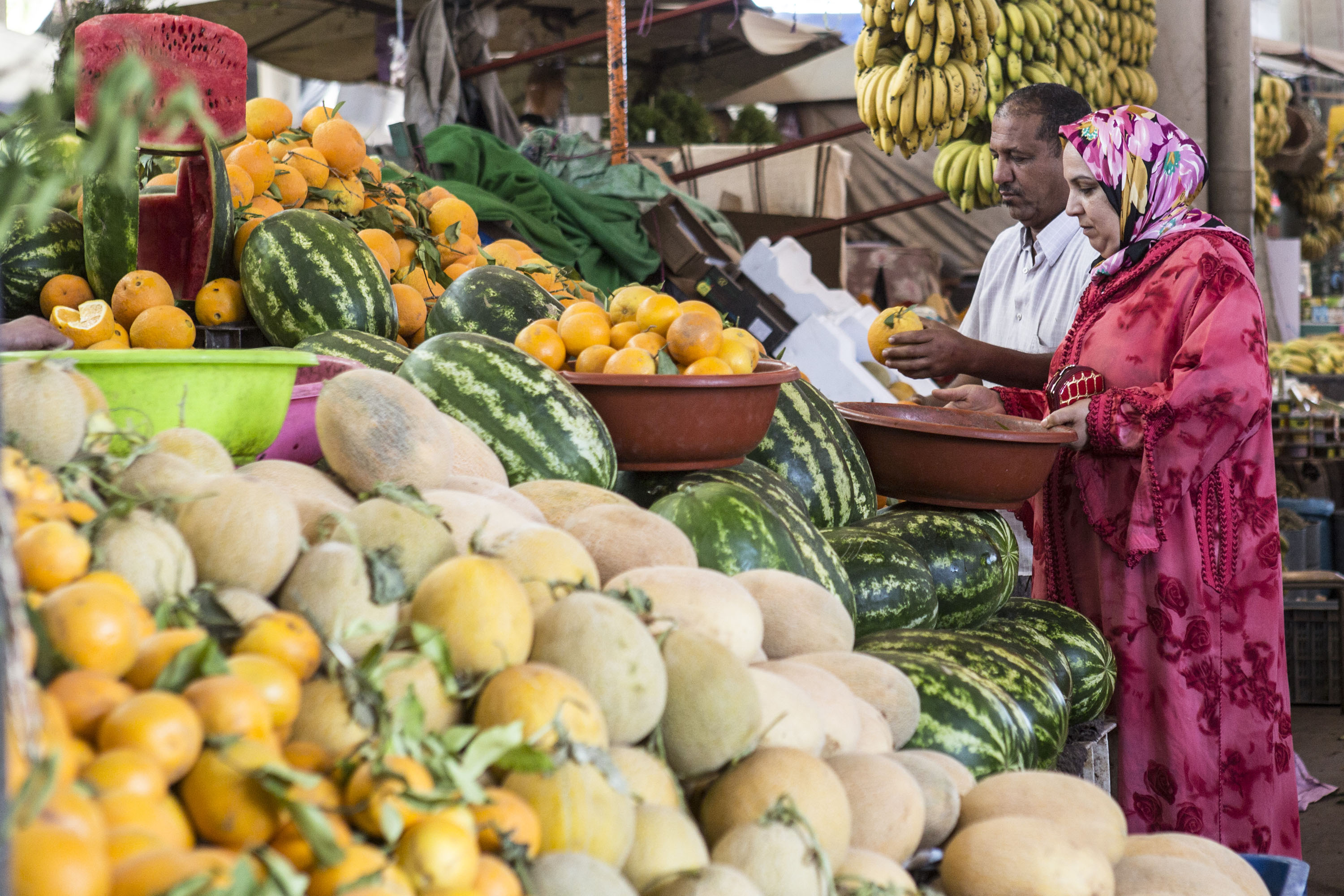Opportunities ripe in Poland for Moroccan fruit and vegetables exporters
 Agadir , Morocco - Woman buying Oranges at Agadir's Suk Market.
Agadir , Morocco - Woman buying Oranges at Agadir's Suk Market.Fifteen Moroccan citrus, tomato and berry producers and their interprofessional association representatives travelled to Warsaw in mid-January to explore trade prospects with Poland.
Poland is one of the largest importers of small citrus fruit in the world, buying mainly from European countries like Spain, Italy and Greece. The country is also a significant importer of counter-season fruits and vegetables.
But Morocco, despite being the fourth largest exporter of clementines and mandarins – accounting for just over 12 percent of global exports of small citrus fruit last year – has yet to directly tap into the Polish market.
FAO Economist Luís Dias Pereira said that “being able to sell produce directly to buyers in Central and Eastern European countries could significantly increase the efficiency of Moroccan exports.”
Othman Tlemcani, Principal Banker at EBRD, added that “we are pleased to contribute to fostering synergies between Poland and Morocco where we have been active for many years. There is significant value addition and investment potential, and we are excited to support the Moroccan horticulture sector.”
The trade mission was supported by the European Union, FAO and the EBRD along with Morocco Foodex within the framework of a recently launched joint project to improve high value-added trade opportunities in Morocco’s horticulture sector.
Over two days, Moroccan exporters visited the Bronisze wholesale market near Warsaw, Poland’s largest market with 1.2 million tonnes in sales volume. Meetings with the market manager and a number of importers based in the market shed light on Polish fresh market operations and offerings.
The delegation also visited the Greenyard Logistics Centre (part of Greenyard, one of the largest integrated fresh produce logistical players globally) where they saw first-hand the level of efficient and reliable logistics needed to operate in the Polish market.
Business-to-business meetings with potential buyers, including Poland’s largest supermarket chain, gave Polish retailers greater insight into the range of fruit and vegetable products Morocco can offer. Likewise, Moroccan exporters came away with a better idea of demand in the Polish market and specific product requirements.
Jolanda Manka, commercial director at Frutland, an importer that frequently sources from North Africa, said that she saw a lot of potential for Moroccan products such as citrus, tomatoes and watermelons.
“While the Polish market would welcome this offering,” she said, “challenges such as logistics, distance and timely delivery still need to be overcome.”
Achour Daoudi from Moroccan Taste, which has trade operations in a number of developed markets, noted that it “normally takes four to five months and about five missions to the country to gain enough understanding of the consumer profile and how to organize commercial and financial flows. This time it took me two days.”
“The quality and number of meetings we had enabled us to clearly understand what needs to be done to address the demands of the Polish market,” he added. “Now it’s just a matter of Moroccan exporters getting together and taking action.”
